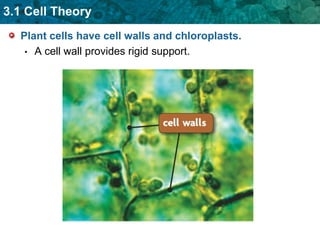Unit 3 Cell Membranes, Diffusion, And Osmosis
•Descargar como PPTX, PDF•
4 recomendaciones•3,489 vistas
Denunciar
Compartir
Denunciar
Compartir

Recomendados
Recomendados
Más contenido relacionado
La actualidad más candente
La actualidad más candente (20)
Destacado
Destacado (20)
Cell membrane powerpoint diffusion and osmosis revised

Cell membrane powerpoint diffusion and osmosis revised
Honors Biology: Cell Membrane ~ Diffusion And Osmosis

Honors Biology: Cell Membrane ~ Diffusion And Osmosis
Unit 14a Relationships, biotic, and abiotic factors

Unit 14a Relationships, biotic, and abiotic factors
Unit 16a Resource consumption pollution and greenhouse effect

Unit 16a Resource consumption pollution and greenhouse effect
Similar a Unit 3 Cell Membranes, Diffusion, And Osmosis
Similar a Unit 3 Cell Membranes, Diffusion, And Osmosis (20)
INTRODUCTION AND CELLULAR LEVEL OF ORGANIZATION.pptx

INTRODUCTION AND CELLULAR LEVEL OF ORGANIZATION.pptx
Más de Olympus High School - Jeff Taylor
Más de Olympus High School - Jeff Taylor (20)
SDS Episode2 - The Habitat Requirements of Pacific Northwest Bats

SDS Episode2 - The Habitat Requirements of Pacific Northwest Bats
Unit 18a DNA fingerprinting and genetic engineering

Unit 18a DNA fingerprinting and genetic engineering
Unit 15a Habitat niche interactions and growth patterns

Unit 15a Habitat niche interactions and growth patterns
Unit 3 Cell Membranes, Diffusion, And Osmosis
- 1. Plant cells have cell walls and chloroplasts. A cell wall provides rigid support.
- 2. Plant cells have cell walls and chloroplasts. A cell wall provides rigid support. Chloroplasts convert solar energy to chemical energy.
- 3. KEY CONCEPT The cell membrane is a barrier that separates a cell from the external environment.
- 4. Cell membranes are composed of two phospholipid layers.
- 5. Cell membranes are composed of two phospholipid layers. The cell membrane has two major functions. cell membrane
- 6. Cell membranes are composed of two phospholipid layers. The cell membrane has two major functions. forms a boundary between inside and outside of the cell cell membrane outside cell inside cell
- 7. Cell membranes are composed of two phospholipid layers. The cell membrane has two major functions. forms a boundary between inside and outside of the cell controls passage of materials cell membrane outside cell inside cell
- 8. Cell membranes are composed of two phospholipid layers.
- 9. cell membrane Cell membranes are composed of two phospholipid layers. The cell membrane is made of a phospholipid bilayer.
- 10. Cell membranes are composed of two phospholipid layers. The cell membrane is made of a phospholipid bilayer. There are other molecules embedded in the membrane. carbohydrate chain protein cell membrane cholesterol protein protein channel
- 11. Cell membranes are composed of two phospholipid layers. The cell membrane is made of a phospholipid bilayer. There are other molecules embedded in the membrane. The fluid mosaic model describes the membrane. carbohydrate chain protein cell membrane cholesterol protein protein channel
- 12. Cell membranes are composed of two phospholipid layers.
- 13. Cell membranes are composed of two phospholipid layers. The cell membrane is selectively permeable. Some molecules can cross the membrane while others cannot.
- 14. Cell membranes are composed of two phospholipid layers. The cell membrane is selectively permeable. Some molecules can cross the membrane while others cannot.
- 15. Chemical signals are transmitted across the cell membrane. Receptors bind with ligands and change shape. There are two types of receptors.
- 16. Chemical signals are transmitted across the cell membrane. Receptors bind with ligands and change shape. There are two types of receptors. intracellular receptor
- 17. Chemical signals are transmitted across the cell membrane. Receptors bind with ligands and change shape. There are two types of receptors. intracellular receptor membrane receptor
- 18. KEY CONCEPT Materials move across membranes because of concentration differences. Diffusion and Osmosis
- 20. There are two types of passive transport.
- 21. diffusion
- 22. osmosis Diffusion and Osmosis
- 26. isotonic
- 27. hypertonic
- 29. Facilitated diffusion is diffusion through transport proteins. Diffusion and Osmosis
- 30. KEY CONCEPT Cells use energy to transport materials that cannot diffuse across a membrane. Active Transport, Endocytosis, and Exocytosis
- 32. Active transport is powered by chemical energy (ATP).
- 33. Active transport occurs through transport protein pumps.
- 35. Endocytosis is the process of taking material into the cell.
- 36. Phagocytosis is a type of endocytosis. Active Transport, Endocytosis, and Exocytosis
- 38. Exocytosis is the process of expelling material from the cell. Active Transport, Endocytosis, and Exocytosis
